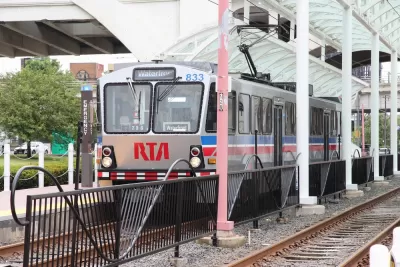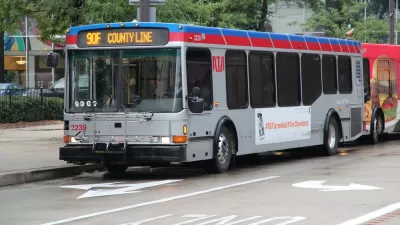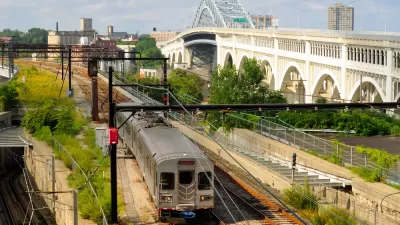The Greater Cleveland Regional Transit Authority's Waterfront rail line carries 400 riders a day. As the authority struggles to fill a $7 million budgetary gap, is it time to finally bury the unused line?

Tim Kovach explores the implications of a recent decision to raise fares on the Greater Cleveland Regional Transit Authority (GCRTA) system in light of a $7 million budget shortfall. The GCRTA Board of Trustees recently "approved a series of stepwise fare increases that will take effect on August 16, which should increase annual operating revenues by $3.5 million. Single-ride fares will increase to $2.50 from $2.25 currently and, ultimately, rise again to $2.75 in August 2018. All day passes will increase from $5 to $5.50 and ultimately $6, while monthly passes will jump from $85 to $95 and then $105."
Not only do those fare increases mean "Cleveland’s fares are now on par with, or even higher than, some of the most extensive transit systems in the country," writes Kovach, they also won't cover the extent of the deficit.
Which brings Kovach to the debate over what to do with the GCRTA's "Ghost Line"—officially known as the Waterfront rail line, "which ferries customers from the Tower City transit hub along the Cuyahoga River and lakefront to the South Harbor," carrying 400 passengers a day and an average of two riders per off-peak train.
The main theme of the article is what exactly to do about the Ghost Train, in light of development expectations along the line as well as sunk cost (the line cost $50 million to construct and opened in 1996). Kovach recommends a few steps planners and local officials should take to determine the future of the line.
FULL STORY: Asking some lingering questions about cutting service on the Waterfront Line

Planetizen Federal Action Tracker
A weekly monitor of how Trump’s orders and actions are impacting planners and planning in America.

Chicago’s Ghost Rails
Just beneath the surface of the modern city lie the remnants of its expansive early 20th-century streetcar system.

San Antonio and Austin are Fusing Into one Massive Megaregion
The region spanning the two central Texas cities is growing fast, posing challenges for local infrastructure and water supplies.

Since Zion's Shuttles Went Electric “The Smog is Gone”
Visitors to Zion National Park can enjoy the canyon via the nation’s first fully electric park shuttle system.

Trump Distributing DOT Safety Funds at 1/10 Rate of Biden
Funds for Safe Streets and other transportation safety and equity programs are being held up by administrative reviews and conflicts with the Trump administration’s priorities.

German Cities Subsidize Taxis for Women Amid Wave of Violence
Free or low-cost taxi rides can help women navigate cities more safely, but critics say the programs don't address the root causes of violence against women.
Urban Design for Planners 1: Software Tools
This six-course series explores essential urban design concepts using open source software and equips planners with the tools they need to participate fully in the urban design process.
Planning for Universal Design
Learn the tools for implementing Universal Design in planning regulations.
planning NEXT
Appalachian Highlands Housing Partners
Mpact (founded as Rail~Volution)
City of Camden Redevelopment Agency
City of Astoria
City of Portland
City of Laramie





























